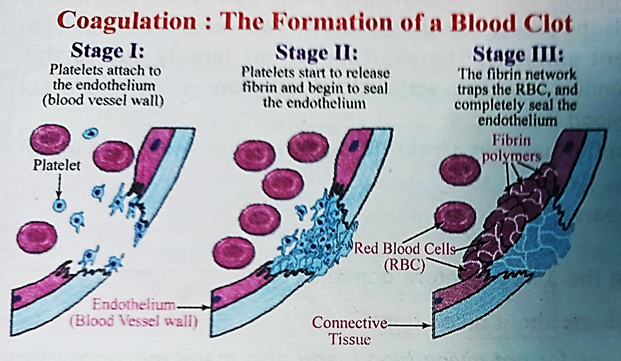Blood Coagulation:
Blood clotting or Blood Coagulation is an important process that prevents excessive loss of blood from our body when we suffer from an injury. Although it depends on the severity of the injury, the blood usually clots within 2 minutes of a cut and forms a plug at the site of injury that prevents blood from flowing out of the body.
This process is controlled by a signaling cascade consisting of 13 coagulation factors that interact and activate each other. This blood clotting is a complex process involving many clotting factors (calcium ions, enzymes, platelets, damaged tissue, etc) activating each other.

At the end of the coagulation cascade, fibrinogen is converted into fibrin. A network of fibrin fibers reinforces wound closure, platelets, and other blood cells get caught in this network and form a blood clot. Finally, platelets and the endothelium release growth factors that control the wound healing process. At the end of the process, the fibrin network is dissolved by enzymes in the blood plasma. There are stages of the Blood Coagulation process are:
1. Formation of Prothrombinase: It can be formed in two ways. It depends on which of two “systems” or “pathways” apply. These are –
i. Intrinsic System: This is initiated by liquid blood-making contact with a foreign surface, something that is not part of the body.
ii. Extrinsic System: This is initiated by liquid blood-making contact with damaged tissue. Both intrinsic and extrinsic systems involve interaction between coagulation factors. These factors have individual names but are often referred to by a standardized set of Roman Numerals.
2. Prothrombin: It is converted into the enzyme Thrombin. Prothrombinase converts prothrombin, which is a plasma protein that is formed in the liver into the enzyme thrombin.
3. Fibrinogen: It is converted to Fibrin. In turn, thrombin converts fibrinogen into fibrin. It is insoluble and forms the threads that bind the clot.